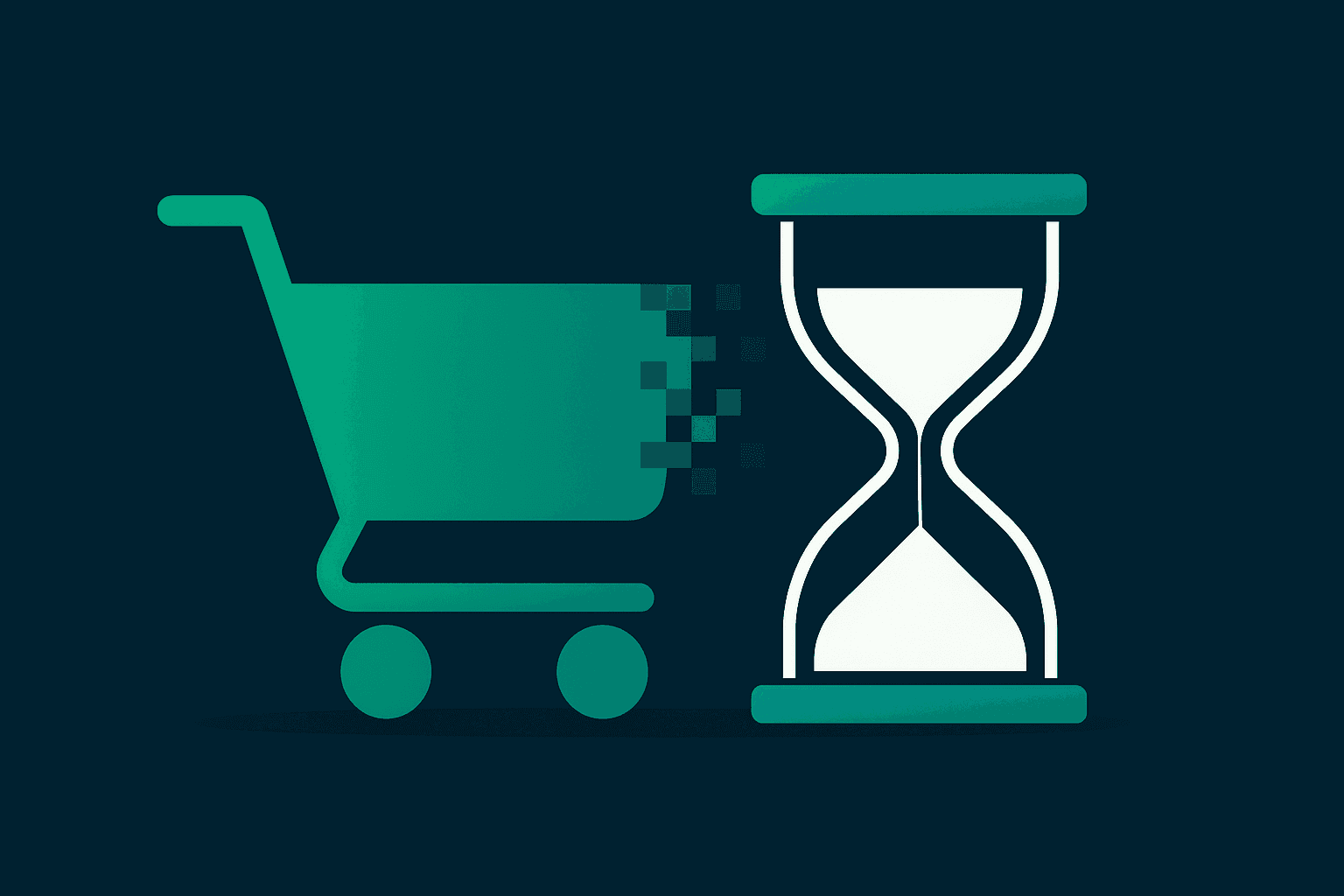Shopify
The Hidden Revenue Drain in Shopify’s Cart Expiration; and How to Fix It
Rohith

When you run a DTC store, every click, impression, and email is an investment in buyer intent. Yet there’s a silent time bomb embedded deep inside Shopify’s default behaviour: after 10 days, every anonymous cart is auto‑deleted. That means when a would‑be customer finally pops back to complete their order on day 11, they’re greeted by a jarring blank slate instead of the carefully crafted basket they built earlier.
Sound minor? It isn’t. Let’s unpack why this policy quietly erodes revenue for growth‑minded brands; and what you can do to stop the bleed.
1. The 10‑Day Time Bomb
Shopify’s reasoning is simple: purging stale carts keeps its database lean. Unfortunately, the same logic ignores real‑world buying behaviour. Shoppers researching high‑consideration products—furniture, jewellery, premium apparel - often take two to three weeks to decide. The gap between browsing and buying is even longer around seasonal pay‑days or gift‑giving peaks when customers compare options across multiple tabs and devices.
Every time a cart hits day 11, Shopify wipes it clean. The shopper must either:
- painstakingly rebuild their order (often forgetting half the SKUs), or
- shrug and abandon the purchase altogether.
Both outcomes hurt conversion and brand perception.
2. Why DTC Brands Feel the Pain First
Direct‑to‑consumer stores live and die by user experience. Unlike marketplace giants, you can’t afford friction that diminishes the sense of personal connection. A surprise empty cart is precisely that: friction.
- Longer evaluation windows. High‑quality, design‑driven goods take more deliberation.
- Higher AOV stakes. Carts often carry premium bundles; losing them cuts straight into margins.
- Story‑driven marketing. Your campaigns nurture customers across multiple touch‑points. Losing the cart severs that narrative thread.
In short: the more a brand invests in being memorable, the worse it feels when the platform itself forgets what the shopper wanted.
3. Cookies Alone Can’t Save You
“But my theme already keeps carts between sessions,” you might say. True - until cookies expire, privacy settings update, or the shopper returns on a different device. Modern browsers wipe third‑party cookies by default and regularly purge first‑party ones too. A completely cookie‑free visitor has no cart continuity at all, even within the 10‑day window.
4. The Server‑Side Answer: Persist Carts, Not Problems
Friction (our Shopify app) solves the expiry dilemma with a two‑step approach:
- Device fingerprinting. We create a pseudonymous, GDPR‑ready fingerprint that recognises a shopper - even across browsers - without storing PII.
- Server‑side cart vault. Every cart is mirrored instantly to secure cloud storage the moment an item is added. If Shopify deletes the cart, Friction simply restores it on the spot when the visitor returns.
The shopper has no idea a rescue happened. They just see their items waiting patiently, as if nothing changed, increasing the odds they’ll hit “Checkout” rather than “Close Tab.”
5. Go Live in Under Two Minutes
We wanted zero engineering overhead:
- 1‑click install. Authorise the app and we handle the rest - no theme edits.
- Automatic sync. Carts start saving the moment the snippet loads.
- Works with your stack. Recovered carts appear as ordinary carts, so Klaviyo flows, Meta retargeting, and built‑in Shopify analytics continue unaffected.
6. Real‑World Impact
Early adopters have seen:
- 20 % + uplift in recovered revenue from returning visitors.
- Higher AOV, since large carts are more likely to complete intact.
- Bigger remarketing lists, because Friction also preserves any email captured at checkout, even if payment never happened.
Put differently: the marketing dollars you’re already spending finally compound instead of leaking value through an invisible 10‑day hole.
7. Tips to Maximise Your Cart Recovery ROI
- Pair Friction with a triggered email. If the shopper enters an email (e.g., in the first checkout step), send a gentle reminder after 24 hours.
- Use urgency copy sparingly. Once you know the cart won’t vanish, focus on social proof or helpful content rather than heavy countdown timers.
- Segment your ads. Build a retargeting audience of “Cart recovered but not purchased” to nudge late‑deciders through Meta or TikTok.
- Monitor AOV shifts. Customers who come back to a full cart often add another item—they appreciate that you remembered for them. Track that incremental lift.
8. The Takeaway
You pour time and capital into driving traffic. Allowing Shopify’s default purge policy to zero‑out those high‑intent carts is like patching a leaky bucket with more water. Friction seals the hole, restoring every cart automatically; no code, no hassle, no more lost sales.
Ready to keep every customer memory intact?
→ Install Friction now and start recovering revenue in the next two minutes.